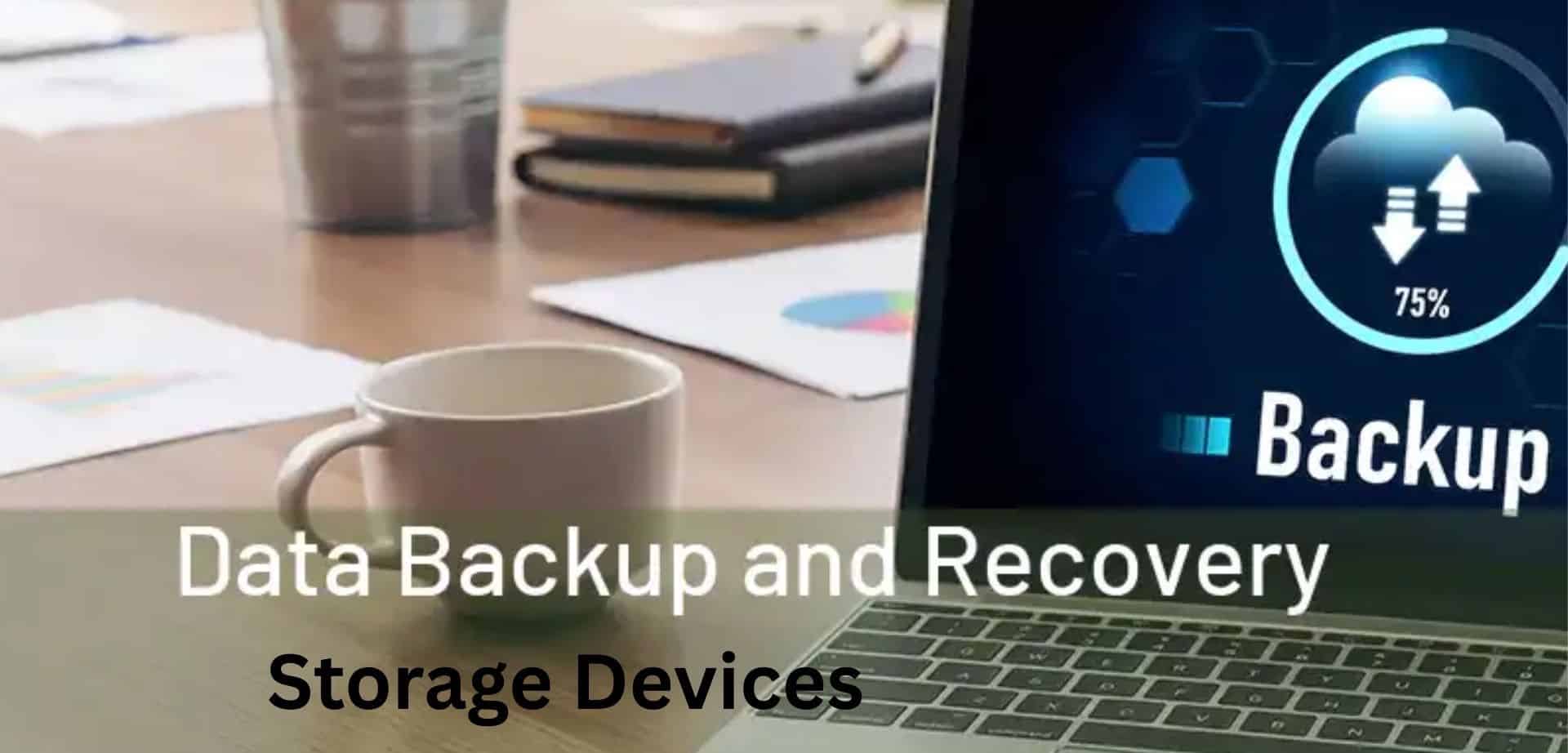Best Practices for Data Backup and Recovery on Storage Devices

Data loss can be catastrophic, whether it’s due to hardware failure, accidental deletion, or cyberattacks. To ensure critical data remains secure, businesses and individuals must adopt effective backup and recovery strategies. The key to a reliable system lies in leveraging cloud backup solutions, high-capacity external hard drives, and data recovery software. By implementing a structured approach to backup and recovery, users can safeguard their files and minimize downtime in case of unexpected failures.
Understanding the Importance of Data Backup
Data loss can occur for various reasons, including:
- Hardware failures – Storage devices have a limited lifespan and can fail unexpectedly.
- Cyberattacks – Ransomware and malware can corrupt or encrypt data, rendering it inaccessible.
- Human error – Accidental deletion or formatting can lead to permanent loss.
- Natural disasters – Fires, floods, or power surges can destroy physical storage devices.
A well-designed backup strategy ensures that data remains accessible even in the face of these risks.
Types of Data Backup Strategies
A robust backup plan involves multiple layers of protection. Here are the most common backup strategies:
1. Full Backup
A full backup involves copying all data from a storage device to a separate location. This method provides the highest level of protection but requires substantial storage space and time.
- Best for: Businesses and individuals with mission-critical data.
- Storage Requirements: High-capacity external hard drives or cloud backup solutions.
- Frequency: Weekly or monthly, depending on data volume.
2. Incremental Backup
Incremental backups only store data that has changed since the last backup. This method reduces storage requirements and speeds up the process.
- Best for: Daily or real-time backups with limited storage.
- Storage Requirements: Cloud backup solutions or network-attached storage (NAS).
- Frequency: Hourly, daily, or weekly.
3. Differential Backup
A differential backup stores all changes made since the last full backup. It requires more storage than incremental backups but simplifies recovery.
- Best for: Organizations that need quick recovery times.
- Storage Requirements: High-capacity external hard drives or cloud storage.
- Frequency: Every few days.
4. Hybrid Backup (3-2-1 Rule)
The 3-2-1 backup rule is a widely recommended approach:
- Keep three copies of your data.
- Store copies on two different storage types.
- Maintain one copy in an offsite location.
For example, data can be stored on a local computer, a high-capacity external hard drive, and a cloud backup solution.
Choosing the Right Backup Storage Device
Selecting the right storage device is crucial for an effective backup strategy.
1. Cloud Backup Solutions
Cloud backup solutions offer remote data protection, automatic syncing, and accessibility from anywhere.
Advantages:
- Scalable storage options.
- Automatic backups reduce human error.
- Data is protected from physical damage or local failures.
Disadvantages:
- Requires a stable internet connection.
- Subscription costs can add up over time.
2. High-Capacity External Hard Drives
A high-capacity external hard drive provides a cost-effective and reliable way to store backups.
Advantages:
- No internet dependency.
- One-time purchase with no recurring fees.
- Portable and easy to use.
Disadvantages:
- Susceptible to physical damage.
- Limited to local accessibility.
3. Network-Attached Storage (NAS)
NAS devices are ideal for businesses and advanced users who need centralized backup solutions.
Advantages:
- Allows multiple users to access data.
- Supports RAID configurations for redundancy.
- Provides local and remote backup options.
Disadvantages:
- Requires an initial investment.
- More complex setup compared to standard external drives.
Best Practices for Data Backup
1. Automate Your Backups
Relying on manual backups increases the risk of missed updates. Use cloud backup solutions or backup software to schedule automatic backups.
2. Use Multiple Backup Locations
A combination of high-capacity external hard drives and cloud backup solutions ensures data redundancy.
3. Encrypt Your Backups
To prevent unauthorized access, use encryption tools for sensitive data stored on local devices or in the cloud.
4. Regularly Test Backup Integrity
Simply creating backups isn’t enough. Periodically test your backups to ensure files are not corrupted and can be restored successfully.
5. Implement Versioning
Backup versioning allows users to restore older copies of files in case of accidental changes or ransomware attacks. Most cloud backup solutions offer this feature.
Data Recovery Strategies
Even with robust backup measures, data loss can still occur. Using data recovery software can help retrieve lost or deleted files.
1. Understanding Data Recovery Software
Data recovery software scans storage devices for lost or deleted files and attempts to restore them.
Key Features:
- Deep scan and quick scan modes.
- Recovery of multiple file types (documents, photos, videos).
- Compatibility with different storage media (HDDs, SSDs, external drives).
2. When to Use Data Recovery Software
- After accidental deletion of important files.
- If a storage device becomes inaccessible due to corruption.
- In cases where no recent backup is available.
3. Professional Data Recovery Services
If data recovery software fails, professional recovery services can help retrieve data from physically damaged or corrupted devices.
When to Seek Professional Help:
- The storage device is physically damaged.
- There are signs of severe data corruption.
- DIY recovery attempts have failed.
Common Data Backup and Recovery Mistakes
1. Not Having a Backup Plan
Many users neglect backups until they experience data loss. Establish a routine backup schedule using cloud backup solutions and high-capacity external hard drives.
2. Storing All Backups in One Location
A local external drive backup is not sufficient. If disaster strikes, both the primary device and backup may be lost. Use cloud backup solutions for offsite protection.
3. Failing to Update Backups Regularly
Old backups may not include the latest files. Set automated backups to ensure data is always up to date.
4. Ignoring Security Measures
Unencrypted backups pose a security risk. Always encrypt sensitive data, especially when using cloud backup solutions.
5. Not Testing Recovery Processes
Having a backup is useless if it cannot be restored. Regularly test your backups with data recovery software to confirm their integrity.
The Future of Data Backup and Recovery
As data volumes grow, storage and backup solutions are evolving:
1. AI-Powered Backup Management
Artificial intelligence is being integrated into cloud backup solutions to optimize storage, detect anomalies, and predict failures.
2. Blockchain for Data Security
Blockchain technology is being used to create tamper-proof backup records, ensuring data integrity.
3. Faster and More Reliable Storage Devices
Next-generation high-capacity external hard drives and SSDs are improving backup speed and durability.
Conclusion
Effective data backup and recovery strategies protect against data loss, downtime, and security threats. By using cloud backup solutions, high-capacity external hard drives, and data recovery software, individuals and businesses can ensure their files remain safe and accessible. Implementing best practices such as automated backups, encryption, and multiple storage locations will help minimize the risk of data loss and streamline recovery efforts.



